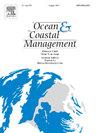Resilience maintenance strategy for mixed vehicle traffic on port expressway based on lane management
IF 4.8
2区 环境科学与生态学
Q1 OCEANOGRAPHY
引用次数: 0
Abstract
Ports serve as critical nodes in the global shipping network and vital gateways for goods circulation, requiring resilience to withstand external disruptions. Expressway connecting ports are key channels for freight transport, and their traffic conditions significantly influence port operational resilience. This study explores optimal lane management strategies for mixed traffic environments involving connected autonomous vehicle (CAV) and human-driven vehicle (HDV) on future port-connected expressway. By integrating connected autonomous truck (CAT) into the mixed traffic flow, this study proposes three lane management strategies tailored to different vehicle purposes. The intrinsic relationship between traffic flow and the penetration rate of CAV are investigated by simulation and numerical analysis. A traffic flow prediction model is constructed to evaluate traffic conditions in real time and determine optimal fleet management strategies based on a decision-making model. Experimental results demonstrate the high reliability of the proposed decision-making outcomes. Finally, sensitivity analysis examines the impacts of speed fluctuations and transition segment lengths on traffic flow under different strategies. It is found that more concentrated speed distributions lead to higher peak traffic flow, while longer transition segments minimize efficiency losses caused by strategy changes. These findings provide valuable insights for improving future traffic conditions around ports.
求助全文
约1分钟内获得全文
求助全文
来源期刊

Ocean & Coastal Management
环境科学-海洋学
CiteScore
8.50
自引率
15.20%
发文量
321
审稿时长
60 days
期刊介绍:
Ocean & Coastal Management is the leading international journal dedicated to the study of all aspects of ocean and coastal management from the global to local levels.
We publish rigorously peer-reviewed manuscripts from all disciplines, and inter-/trans-disciplinary and co-designed research, but all submissions must make clear the relevance to management and/or governance issues relevant to the sustainable development and conservation of oceans and coasts.
Comparative studies (from sub-national to trans-national cases, and other management / policy arenas) are encouraged, as are studies that critically assess current management practices and governance approaches. Submissions involving robust analysis, development of theory, and improvement of management practice are especially welcome.
 求助内容:
求助内容: 应助结果提醒方式:
应助结果提醒方式:


